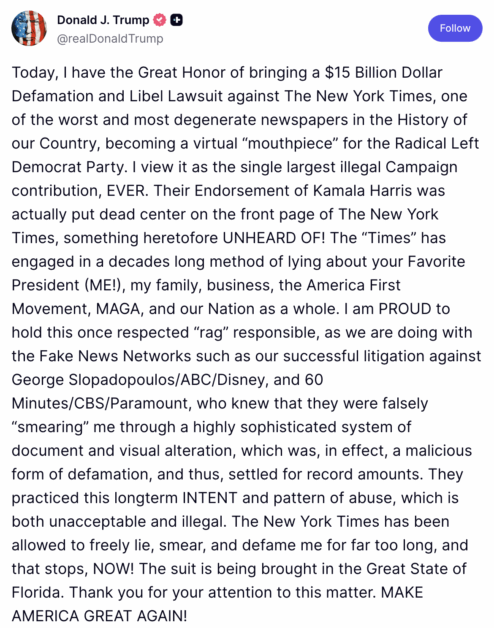Donald Trump launched a $15 billion defamation lawsuit against The New York Times in a Florida federal court on Monday (September 15), accusing the newspaper and four of its journalists of intentionally publishing false and damaging content ahead of the 2024 election.
The lawsuit zeroes in on several articles and a book authored by two Times reporters, claiming the coverage was part of a “decades-long pattern by the New York Times of intentional and malicious defamation against President Trump.”
The legal filing alleges the journalists “published such statements negligently, with knowledge of the falsity of the statements, and/or with reckless disregard of their truth or falsity,” ABC News reports.
Trump announced the legal action on his Truth Social account, writing that The New York Times had become “a virtual ‘mouthpiece’ for the Radical Left Democrat Party.”

The paper has not issued a public response as of early Tuesday (September 16).
This isn’t Trump’s first legal clash with the media. In July, he filed a $10 billion defamation suit against The Wall Street Journal and Rupert Murdoch following a story linking him to financier Jeffrey Epstein. According to a USA Today analysis, Trump has been involved in at least 14 media-related or defamation lawsuits over the years, often targeting outlets that publish critical coverage.
The $15 billion claim marks one of the largest defamation demands Trump has ever filed against a news organization.
Legal scholars note that such cases involving public figures face steep hurdles, as plaintiffs must prove “actual malice”—that is, the publisher either knew the content was false or acted with reckless disregard for the truth.
The lawsuit adds to Trump’s ongoing campaign against what he frequently labels “fake news” media, a theme that has been central to his political messaging since his first presidential run.
